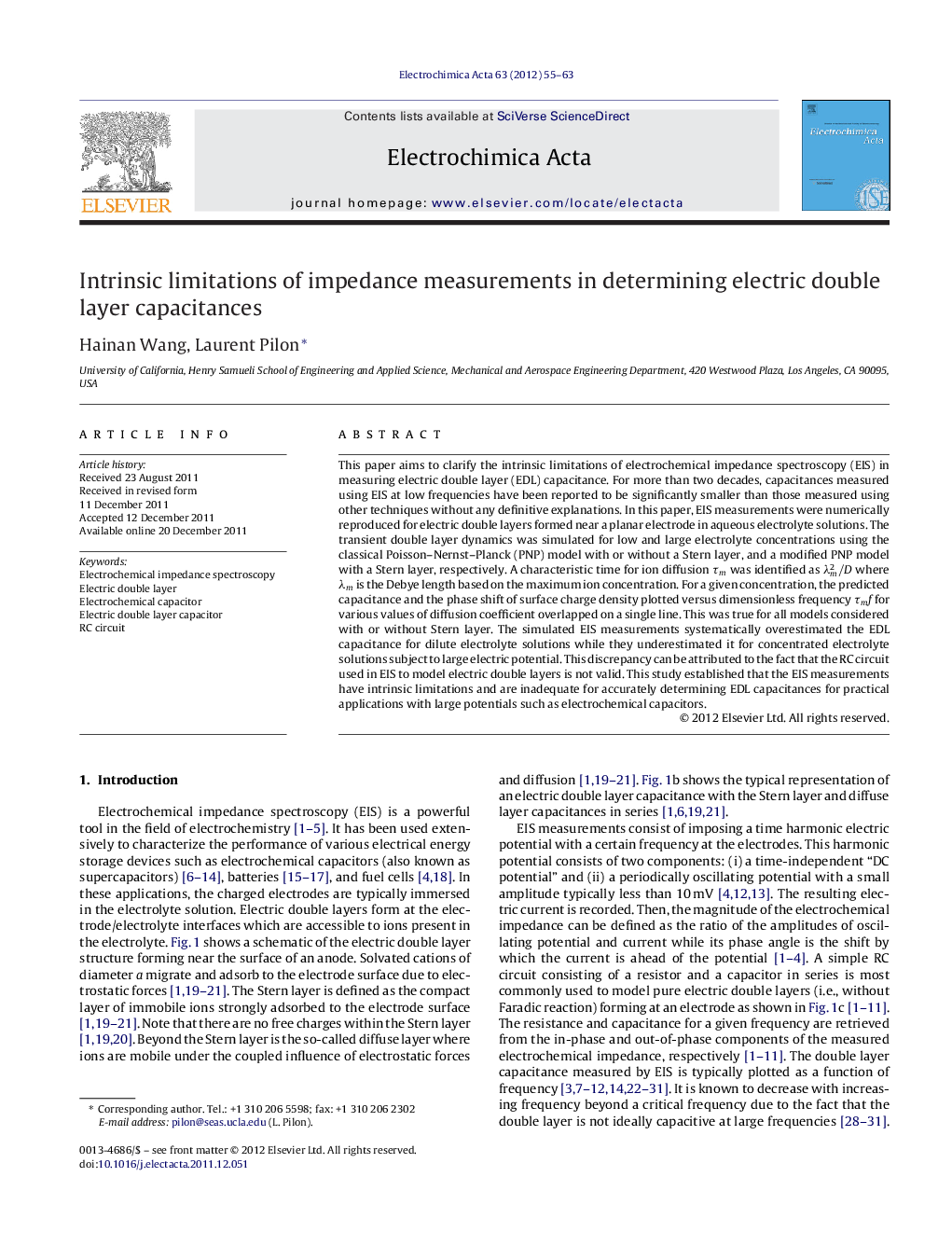| Article ID | Journal | Published Year | Pages | File Type |
|---|---|---|---|---|
| 189121 | Electrochimica Acta | 2012 | 9 Pages |
This paper aims to clarify the intrinsic limitations of electrochemical impedance spectroscopy (EIS) in measuring electric double layer (EDL) capacitance. For more than two decades, capacitances measured using EIS at low frequencies have been reported to be significantly smaller than those measured using other techniques without any definitive explanations. In this paper, EIS measurements were numerically reproduced for electric double layers formed near a planar electrode in aqueous electrolyte solutions. The transient double layer dynamics was simulated for low and large electrolyte concentrations using the classical Poisson–Nernst–Planck (PNP) model with or without a Stern layer, and a modified PNP model with a Stern layer, respectively. A characteristic time for ion diffusion τm was identified as λm2/D where λm is the Debye length based on the maximum ion concentration. For a given concentration, the predicted capacitance and the phase shift of surface charge density plotted versus dimensionless frequency τmf for various values of diffusion coefficient overlapped on a single line. This was true for all models considered with or without Stern layer. The simulated EIS measurements systematically overestimated the EDL capacitance for dilute electrolyte solutions while they underestimated it for concentrated electrolyte solutions subject to large electric potential. This discrepancy can be attributed to the fact that the RC circuit used in EIS to model electric double layers is not valid. This study established that the EIS measurements have intrinsic limitations and are inadequate for accurately determining EDL capacitances for practical applications with large potentials such as electrochemical capacitors.
